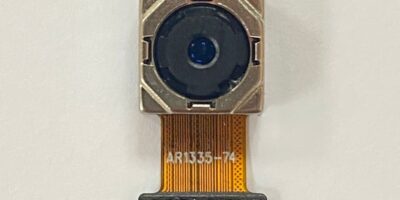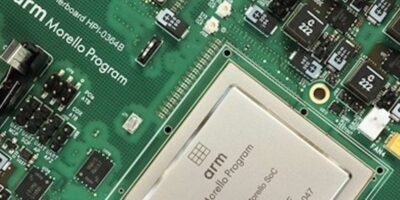Two families of 2.4GHz wireless SoCs are for Bluetooth and multiple-protocol operations with Matter-Ready Platform
The BG24 for Bluetooth and MG24 for multiple-protocols designs have been released, together with a software toolkit by Silicon Labs. The company says the co-optimised hardware and software platform will help bring AI/ML (artificial intelligence / machine learning) applications and wireless high performance to battery-powered edge devices.
The low power BG24 and MG24 SoCs incorporate PSA Level 3 Secure Vault protection, making them suitable for a range of applications in smart home, medical and industrial applications.
Together with what are believed to be the industry’s first integrated AI/ML accelerators, the 2.4GHz wireless SoCs have support for Matter, Zigbee, OpenThread, Bluetooth Low Energy, Bluetooth mesh, proprietary and multi-protocol operation. They also have the largest memory and flash capacity in the Silicon Labs portfolio, says the company.
The software toolkit helps developers to quickly build and deploy AI and ML algorithms using some of the most popular tool suites, like TensorFlow.
AI and ML has the potential to bring even greater intelligence to edge applications like home security systems, wearable medical monitors, sensors monitoring commercial facilities and industrial equipment, but there are performance and energy penalties for anyone considering deploying AI or ML at the edge, reports Silicon Labs.
The company has developed the BG24 and MG24 as the first ultra-low powered devices with dedicated AI / ML accelerators built-in to alleviate those penalties. The specialised hardware is designed to handle complex calculations quickly and efficiently, with internal testing showing up to a four times improvement in performance along with up to a six-fold improvement in energy efficiency. The ML calculations are performed on the local device rather than in the cloud, meaning that network latency is eliminated for faster decision-making and actions, says the company.
The large flash and RAM capacities mean that the device can evolve for multi-protocol support, Matter and trained ML algorithms for large datasets. PSA Level 3-Certified Secure Vault, the highest level of security certification for IoT devices, provides the security needed in products like door locks, medical equipment, and other sensitive deployments which required hardening the device from external threats.
In addition to native support for TensorFlow, Silicon Labs has partnered with AI and ML tools providers, SensiML and Edge Impulse, for a toolchain claimed to simplify the development of ML models optimised for embedded deployments of wireless applications. Developers can use the AI/ML toolchain with Silicon Labs’ Simplicity Studio and the BG24 and MG24 families of SoCs, to create applications that draw information from various connected devices, communicating with each other using Matter to then make intelligent ML-driven decisions.
An example of a target applications would be commercial office buildings, where lights are controlled by motion detectors that monitor occupancy- which are connected to audio sensors through the Matter application, so that someone sitting at a desk typing is not plunged into darkness because the additional audio data (the sound of typing) can be run through an ML algorithm for the lighting system to make a more informed decision about whether the lights should be on or off.
ML computing at the edge enables other intelligent industrial and home applications, including sensor-data processing for anomaly detection, predictive maintenance, audio pattern recognition for improved simple-command word recognition and vision use cases like presence detection or people counting with low-resolution cameras.
The single-die BG24 and MG24 SoCs combine a 78MHz Arm Cortex-M33 processor, 2.4GHz radio, 20-bit ADC, a combination of flash (up to 1536kbyte) and RAM (up to 256kbyte), and an AI/ML hardware accelerator for processing ML algorithms while offloading the Arm Cortex-M33.
The EFR32BG24 and EFR32MG24 SoCs are available in 5.0 x 5.0mm QFN40 and 6.0 x 6.0mm QFN48 packages. They are shipping today to alpha customers and will be available for mass deployment in April 2022. Multiple evaluation boards are available and modules based on the BG24 and MG24 SoCs will be available in the second half of 2022.






